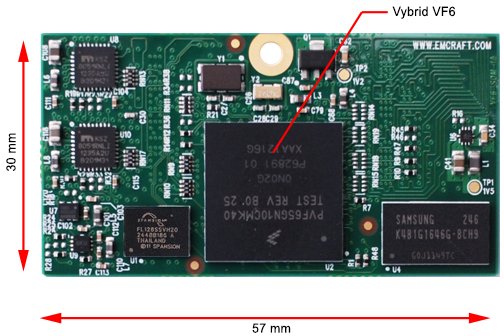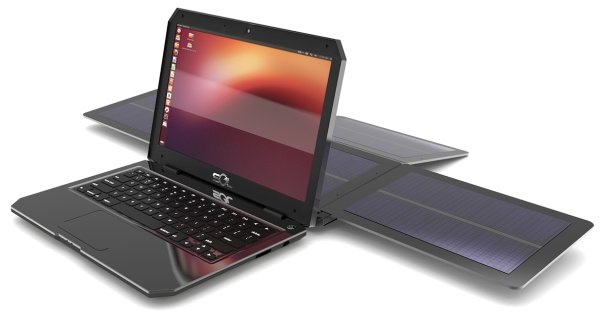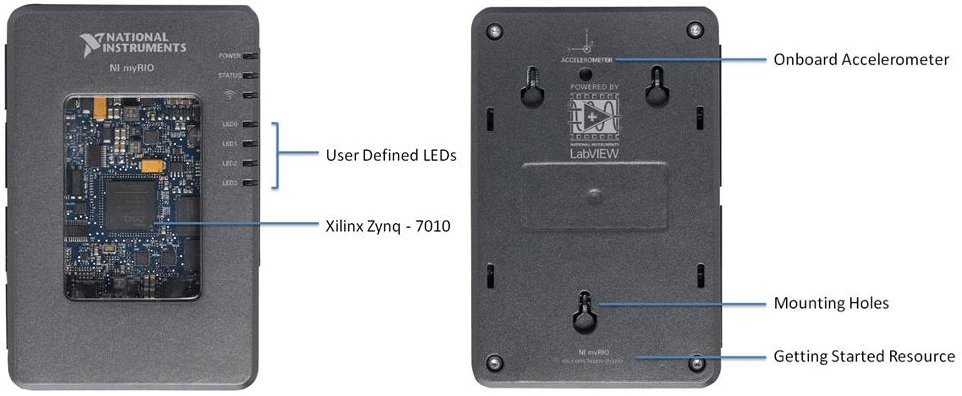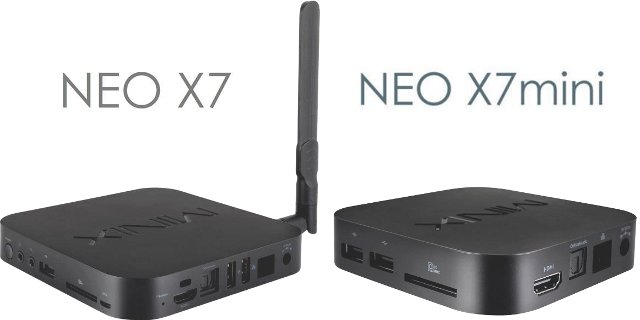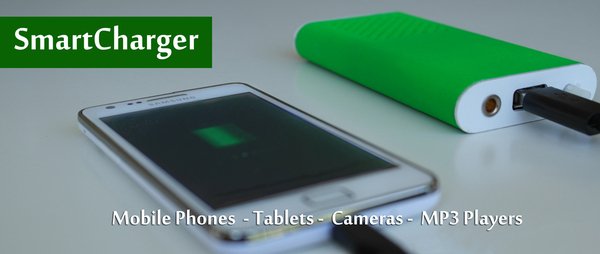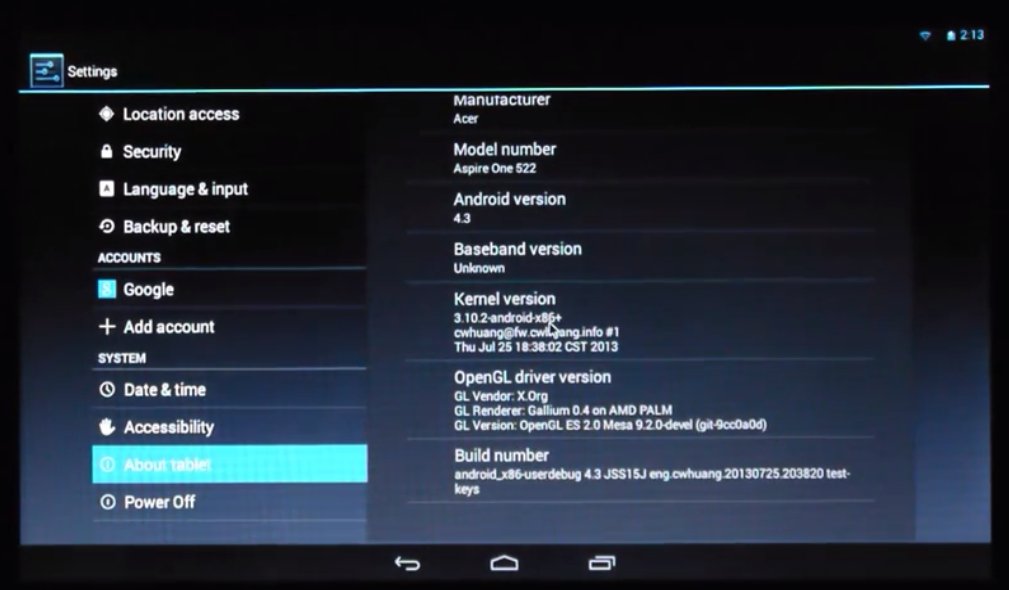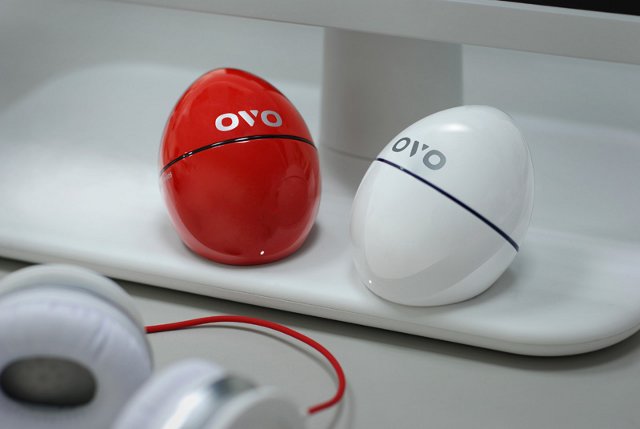Emcraft Systems has recently announced Vybrid VF6 SoM, a System-on-Module powered by Freescale Vybrid VF6 dual core Cortex A5/Cortex M4 SoC with 128MB DDR3, and 512MB Flash, as well as a starter kit composed of VF6 SoM and a carrier board. Emcraft VF6 System-on-Module specifications: SoC – Freescale Vybrid VF6 dual-core microprocessor with the ARM Cortex-A5 (up to 500 MHz) and Cortex-M4 cores (up to 167 MHz). Either MVF61NN151CMK50 (No Security), or MVF61NS151CMK50 (with Security). System Memory – 128 MBytes DDR3 SDRAM; Storage – Up to 512 MBytes NAND Flash, 32 MBytes dual QSPI Flash; Connectivity – Two 10/100 Ethernet interfaces with L2 switch; External interfaces using two 80-pin 0.4 mm-pitch connectors: Two USB 2.0 OTG interfaces Serial console interface at the UART CMOS levels; JTAG interface to the Vybrid VF6 TFT LCD interface Synchronous audio interface (SAI) supporting I2S, AC97 and CODEC/DSP interfaces Multiple serial digital (UART, SPI, I2C, […]
WeWi SOL Ubuntu Laptop is Powered by an Intel Atom Processor and Solar Energy
WeWi Telecommunications has designed a solaptop (Solar-powered laptop) with 4 foldable solar panels in order to recharge the battery. WeWi SOL is powered by Intel Atom D2500, with 4GB RAM, features a 13.3″ display, and runs Ubuntu. It will be sold for only $300 to $400. WeWi SOL specifications: CPU – Intel Atom D2500 @ 1.86 GHz Dual Core, Intel 945GSE + ICH7M GPU – Built-In Intel GMA3600 Graphics, 1080p HD Video System Memory – 2 to 4GB DDRIII SDRAM (Kingston) Storage – 2.5” SATA HDD 320GB (Seagate) + Card reader (SD/MS/MMC) Display – 13.3″ LCD, WXGA, 1366 x 768 Video Output – HDMI Audio – Realtek ALC661 HD Audio, built-in stereo speakers, internal mic + 3.5mm headphone jack Connectivity: 10/100M Ethernet 3G/4G World/multimode LTE Modem GPS (gpsOne Gen8A) WiFi – MIMO 802.11b/gn (2.4/5GHz) Bluetooth – Integrated Digital Core BT4.0 USB – 3x USB 2.0 Camera – 3MP Battery Operating Time […]
NI myRIO is an Education Platform Powered by Xilinx Zynq-Z7010
National Instruments has been working on a device called NI myRIO, an hardware & software platform that aims at giving engineering students the ability to design real systems quickly for automation, robotics, data logging or embedded systems. The hardware is based on Xilinx Zynq-7010 with a dual-core ARM Cortex-A9 processor and an FPGA with 28,000 programmable logic cells, and features 10 analog inputs, 6 analog outputs, audio I/O channels, and up to 40 lines of digital input/output (DIO). NI myRIO Hardware Specifications: SoC – Xilinx Zynq-7010 with a dual core Cortex A9 processor and FPGA with 28,000 cells System Memory – Unknown Storage – Unknown Expansion Ports: myRIO exPansion Ports (MXP) – Two identical ports (MXP A and MXP B) with 4 analog inputs, 6 digital inputs/outputs, 2 analog outputs, 1 quad encoder, 3 PWMs, 1 UART, 1 I2C and 1 SPI by default. Ports configuration is customizable with Labview […]
MINIX NEO X7Mini vs NEO X7 Android Media Players Comparison
MINIX officially announced their first quad core Android media player, named NEO X7, in early July, and it’s now available for around $140 on sites such as Aliexpress and Geekbuying. More recently, MINIX posted pictures and specifications for MINIX NEO X7mini, a cost down version of MINIX NEO X7. Let’s compare the two. The first (very obvious) difference is the lack of external Wi-Fi antenna on the MINIX X7mini, but that’s not all as shown in the comparison table below. NEO X7 NEO X7mini Processor Quad-Core Cortex A9 Processor (RK3188) Quad-Core Cortex A9 Processor (RK3188) GPU Quad-Core Mali-400MP Quad-Core Mali-400MP System Memory 2GB DDR3 2GB DDR3 Storage 16GB NAND Flash + SD/MMC Card Reader 8GB NAND Flash + SD/MMC Card Reader Connectivity Bluetooth, Ethernet, Dual-Band Wi-Fi (2.4GHz and 5GHz) Bluetooth, Ethernet, 802.11b/g/n Wi-Fi External Antenna Yes No USB 3 x USB Ports + 1 x OTG 2 x USB Ports […]
MK809III Quad Core Android mini PC May Soon Be Available With 4GB RAM, 16GB Flash
The price of quad core Android mini PCs keeps dropping and MK809III (aka QC802) is now available for just over $60 with Rockchip RK3188 SoC, 2GB RAM, and 8GB flash. The recent price drop is not quite large enough to be newsworthy, but one reader (and commenter) noticed something interesting in one product description. So this seller is apparently able to sell MK809III with 4GB RAM and 16GB Flash. 4GB RAM is probably overkill for Android, but it could be useful for those who want to run Linux. The sellers told him MK809III with 4GB RAM (and 8GB Flash) is available for $75, but the minimum order quantity (MOQ) is 20 pieces. I’ve also contacted the seller myself, and initially was told about the “MOQ 20” requirement, and that both 4GB RAM/8GB flash and 4GB RAM/16GB Flash could be made available. But when I asked about the price and lead […]
The “Smart Charger” Is Butane Powered, Tiny, and Holds About a Week of Power for your Smartphone
If you are on the go it may be problematic to keep your smartphone or/and tablet batteries charged at all times. You can always buy extra batteries but you need to remember to charge them before you go, and they may not hold enough power for your needs. Kobion is trying solve this problem with the “Smart Charger”, a charger powered by Butane holding up to 37.2 Wh of power (about 5 to 10 times a typical smartphone’s battery capacity) that you can carry around with you. The charger is in development, and the company is looking for funds in Indiegogo, asking for pledges of $59 (early bird), and then $69 to get the product manufactured at a low cost. You’ll also need to add $5 for shipping. Here are the technical specifications: Dimensions – 120 x 60 x 20 mm Weight – Around 200 grams (empty) Nominal Energy – […]
Android 4.3 x86 Test Image Is Now Available For Tablets and Netbooks
Android-x86 project has been working on porting Android OS to Intel and AMD Desktop PC and Laptop, and just about a week after Android 4.3 has been released in AOSP, the project’s team has already managed to provide an Android 4.3 x86 test image for desktop and laptop, probably helped by the recent push by Intel to have Android device powered by x86 processor. The test build (20130725) is based on Android 4.3 release (Jelly Bean-MR2 branch), and they’ve modified parts of the code to make it work with x86, especially on x86 tablets and netbooks. What’s impressive is that most of features appear to work, and they’ve almost managed to add some additional features. The key features in this release are Upgrade to the latest kernel 3.10.2 to support more drivers. Upgrade Mesa OpenGL ES library to 9.2-devel branch to support hardware acceleration for AMD Radeon and Intel chipsets (not […]
$49 OVO Egg-Shaped Media Player Helps You Collect and Organize Online Videos With your Smartphone
If you’re often watching online videos on your smartphone, and when back home, you’d rather continue watching those on your television, OVO may be for you. The device is a tiny media player shaped like an egg, with a multimedia processor, a minimum amount of RAM and flash, and Wi-Fi. The full specifications haven’t been provided, but here’s what we know about the hardware: SoC- Full HD Media Processor System Memory – 2Gbit DDR3 (256 MB) Storage – 2GBit NAND Flash (256 MB) Connectivity – 2×2 WiFi 802.11b/g/n single-band Video Output – HDMI 1.4 Dimensions – 61.85 mm (h), 63.32 mm (w), 72.78 mm (d) Weight – 77 grams There’s no word about the OS, but it’s probably running some sort of Embedded Linux distribution. Another interesting point about the hardware is that the Wi-Fi module is not placed horizontally, but inclined, and according to the company this improves Wi-Fi […]


